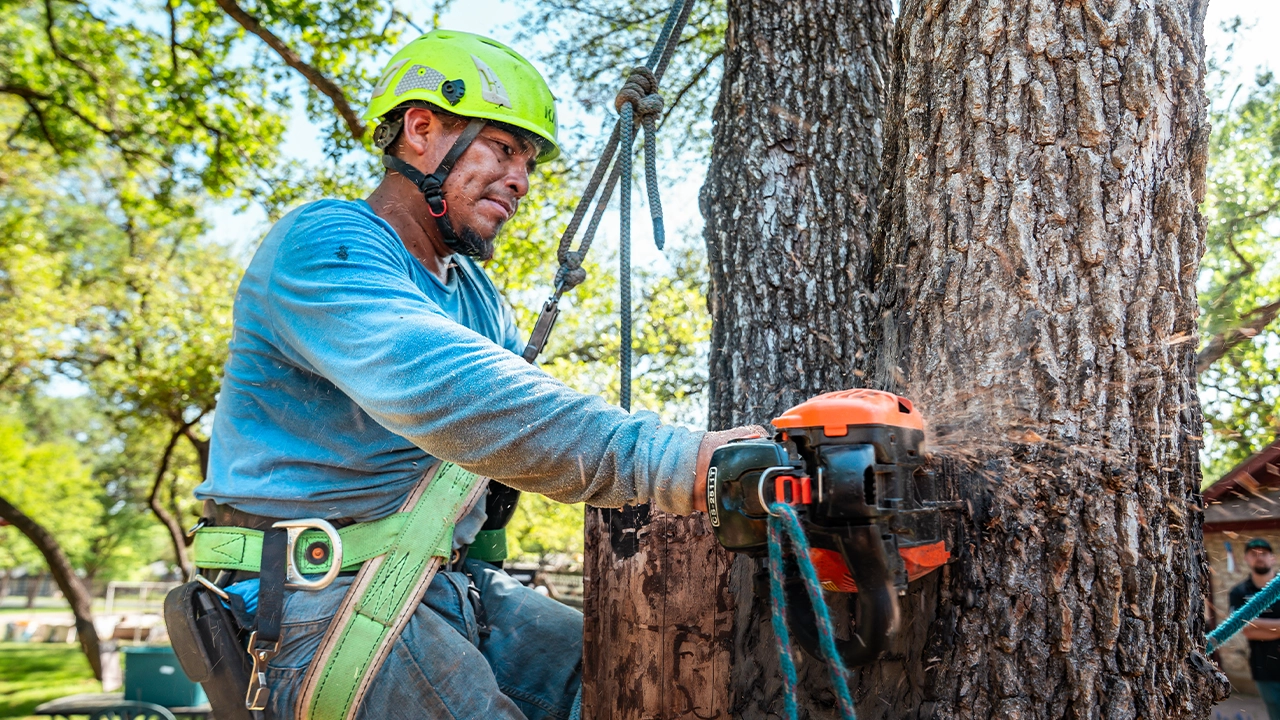When is the Cheapest Time of Year for Tree Removal?
October 9, 2025
By Levi Williams

🌳 What Is the Cheapest Time of Year for Tree Removal?
The Short Answer
The cheapest time of year for tree removal is typically late fall through winter - roughly November through February.
During this period, most trees are dormant, demand is lower, and professional crews like Tree Scouts Tree Service often offer seasonal pricing to keep schedules full.
If you live in Central Texas, including Georgetown, Cedar Park, or Austin, this is also when removals can be done safely and efficiently — with minimal impact on your property.
Why Winter Is Usually the Cheapest Time for Tree Removal
- Lower demand means lower rates
Winter is the slow season for most tree companies. Fewer emergency calls and less residential work mean better flexibility and potential discounts. - Dormant trees are easier and faster to remove
Without sap and dense foliage, trees weigh less and require fewer cuts. That saves time — and time equals money. - Better for your yard
Cooler temperatures and firm ground conditions reduce the chance of lawn ruts or soil compaction from heavy machinery. - You can bundle services for better value
Companies like Tree Scouts often allow you to combine winter pruning, stump grinding, or structural trimming into one visit, which helps you save overall.
👉 Want to see how we handle large winter removals? Visit our Tree Removal Services page for before-and-after examples.
When Tree Removal Costs the Most
Tree removal costs rise when demand spikes or when extra safety precautions are needed, such as:
- Spring through early summer (March–June) — prime growth and storm-prep season.
- After major storms — emergency response calls often include overtime or weekend rates.
- Hazardous or complex removals — near power lines, roofs, or decayed wood requiring crane access.
For a deeper look at what affects pricing, check out How Much Does a Tree Removal Cost?
Average Tree Removal Costs by Size
Small ornamental (under 20 ft) - $250–$450 , Light rigging, quick cleanup
Medium hardwood (20–50 ft) - $450–$1,050, Standard removal
Large oak or pecan (50–80 ft)$1,050–$1,800 Heavier wood, complex rigging
Hazard / crane-assisted - $1,500–$3,000+, High-risk or limited access
These estimates somewhat align with Angi’s 2025 Tree Removal Pricing Guide, but can vary based on region and tree condition. Always request a quote from a certified arborist.
How to Save Money on Tree Removal
- Schedule early in the off-season (Nov–Feb)
Tree companies often plan ahead — so call before peak spring demand. - Bundle multiple services
Add stump grinding or preventative pruning to get a package rate. - Be flexible
Off-peak weekday scheduling can save you more than weekend work. - Opt for “cut-and-stack”
If you can dispose of wood yourself, skip the full haul-off. - Hire local
Avoid travel fees by choosing nearby providers with good reputations.
👉 You can see verified local reviews on our Google Business Profile
When “Cheap” Becomes Expensive
Be cautious of too-good-to-be-true bids. Low prices can mean no insurance, untrained workers, or incomplete cleanup — all of which can cost far more in the long run.
Always confirm:
- Proof of insurance (liability + workers’ comp)
- ISA-Certified Arborist oversight (you can verify certification at treesaregood.org)
- Detailed written estimate with scope and cleanup plan
Tree Scouts’ Honest Approach
At Tree Scouts, we believe safe, sustainable tree care shouldn’t come with surprises.
We’re transparent with pricing, realistic about what’s urgent, and always focused on keeping your property safe — Scout’s Honor.
Call to Action
Ready to schedule your off-season tree removal?
📞 Call 512-265-0861 or request a quote directly on our Tree Scouts Tree Removal page.
For expert advice on long-term care, visit our Tree Resource Hub.
Related Resources
- How to Tell If a Tree Needs Removal After a Storm
- Improper Pruning Shortens Tree Lifespan
- Why Tree Trimming Matters
Helpful FAQs
Q: What month is usually cheapest for tree removal?
A: December through February. Demand slows, and trees are dormant — the perfect window to save.
Q: Does location affect pricing?
A: Yes — local demand, species, and access impact cost. For example, Georgetown’s large live oaks require more labor than smaller ornamentals.
Q: Can I save money by leaving wood behind?
A: Absolutely. Ask for a cut-and-stack option instead of full haul-off — it reduces disposal costs significantly.

